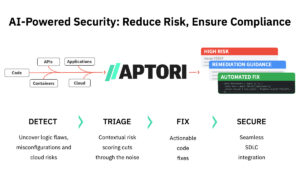In the dynamic landscape of cloud computing, Google Cloud continues to lead the charge, consistently pushing boundaries and redefining industry standards. As we step into 2024, Google Cloud’s strategic goals are laser-focused on enhancing efficiency, fortifying security measures, and unlocking new levels of scalability. This blog post delves into the key pillars that will shape Google Cloud’s trajectory in the coming year, outlining the initiatives that promise to redefine the digital landscape.
Elevating Efficiency: Unleashing the Power of Cloud Optimization
- AI-Driven Resource Allocation
Google Cloud’s commitment to efficiency revolves around harnessing the capabilities of artificial intelligence for smarter resource allocation. In 2024, users can anticipate the introduction of advanced machine learning algorithms that analyze historical data and usage patterns. These algorithms will predict future resource requirements, enabling Google Cloud to allocate resources dynamically, optimizing performance while minimizing costs.
The goal is to move beyond static resource provisioning and create a more responsive infrastructure that adapts to the evolving needs of applications. This initiative aligns with Google Cloud’s vision of making cloud resources as agile and adaptive as possible, ensuring that users get the most value out of their investments.
- Advanced Containerization
Building on the success of Kubernetes, Google Cloud is set to introduce enhancements to its containerization technologies. The focus is on simplifying container orchestration even further, making it more accessible to developers and businesses of all sizes.
New tools and features will be introduced to streamline the deployment, scaling, and management of containerized applications. This not only improves the efficiency of development and operations but also positions Google Cloud as a go-to platform for organizations embracing microservices architecture and containerized workloads.
- Cost-Effective Solutions
Recognizing the diverse needs of its user base, Google Cloud aims to redefine its pricing models to offer more flexibility and transparency. In 2024, users can expect to see new, tailored pricing options designed to align with specific usage patterns and business requirements.
The goal is to eliminate unnecessary costs and provide businesses with the ability to optimize their spending based on actual usage. This initiative reflects Google Cloud’s commitment to democratizing access to cutting-edge cloud technologies by ensuring that cost-effective solutions are within reach for businesses of all sizes.
Fortifying Security: A Paramount Priority
- Zero Trust Architecture
Zero Trust is not just a buzzword; it’s a foundational principle for Google Cloud’s security strategy in 2024. The implementation of a Zero Trust architecture involves a fundamental shift in how security is approached. Instead of relying on the traditional perimeter-based security model, Google Cloud will treat every user, device, and network as potentially untrusted.
Multi-factor authentication, encryption, and the principle of least privilege will be integrated into every layer of the infrastructure, creating a robust security posture. Google Cloud users can expect more granular control over access permissions, reducing the risk of unauthorized access and potential data breaches.
- Continuous Monitoring and Incident Response
In response to the evolving threat landscape, Google Cloud is doubling down on its commitment to continuous monitoring and real-time incident response. Advanced threat detection mechanisms, powered by machine learning and behavioral analytics, will continuously scan for anomalies in user behavior and system activities.
Should a security incident occur, Google Cloud’s incident response capabilities will be bolstered to ensure swift identification, containment, and resolution. The goal is to not only prevent security breaches but also to minimize the impact when incidents do occur, safeguarding the integrity of user data and maintaining trust in the platform.
- Compliance and Governance
As regulatory requirements become more stringent, Google Cloud is committed to expanding its portfolio of compliance certifications. In 2024, users can expect the platform to achieve and maintain certifications that are crucial for businesses operating in highly regulated industries.
This initiative is not only about meeting legal obligations but also about instilling confidence in users that their data is being handled in accordance with the highest standards of security and compliance. Google Cloud aims to be a trusted partner for organizations navigating complex regulatory landscapes, providing the assurance that their data is secure and compliant with industry-specific standards.
Scaling New Heights: Unleashing the Potential of Scalability
- Global Expansion of Data Centers
To address the growing demand for low-latency and high-availability services, Google Cloud is embarking on a global expansion of its data center infrastructure. New data centers will be strategically located to cater to users across different regions, ensuring that data can be processed and delivered with minimal latency.
This initiative not only enhances scalability but also aligns with Google Cloud’s commitment to sustainability. The new data centers will incorporate the latest energy-efficient technologies, contributing to Google Cloud’s overarching goal of achieving carbon neutrality.
- Auto-Scaling for Workloads
Recognizing the dynamic nature of modern workloads, Google Cloud is refining its auto-scaling capabilities. In 2024, users can expect more intelligent auto-scaling that adapts to real-time demand, ensuring that applications scale up or down seamlessly based on usage patterns.
This initiative empowers businesses to optimize costs by only using the resources they need when they need them. It also enhances the overall performance of applications, providing a responsive and scalable infrastructure that can handle fluctuations in user demand without manual intervention.
- Edge Computing Innovations
Edge computing is at the forefront of Google Cloud’s scalability goals. The platform is investing in innovative solutions that bring computation closer to the source of data, reducing latency and unlocking new possibilities for real-time processing.
In 2024, users can anticipate the introduction of tools and services that make it easier to deploy and manage edge computing workloads. This initiative is particularly relevant for applications that require low-latency interactions, such as Internet of Things (IoT) devices and real-time analytics.
Conclusion
As Google Cloud embarks on its strategic goals for 2024, the overarching theme is one of empowerment. Through enhanced efficiency, fortified security measures, and unprecedented scalability, Google Cloud is positioning itself as a catalyst for digital transformation. The initiatives outlined above represent a commitment to not just meet current industry standards but to set new benchmarks for what is achievable in the realm of cloud computing. As businesses navigate an increasingly complex digital landscape, Google Cloud stands as a reliable partner, providing the tools and infrastructure needed to innovate, grow, and succeed in the digital age. The year 2024 holds the promise of a future where organizations can leverage the full potential of the cloud, and Google Cloud is at the forefront of making that vision a reality.



































